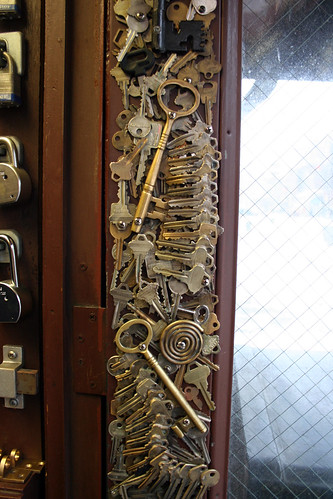Small fry: The tiny fish tank was made by a Russian artist who specialises in miniatures
Here is the perfect home for small fry: the world's smallest aquarium.
Created by Russian artist Anatoly Konenko, who specialises in miniatures, the tiny tank is made of glass, contains tiny stones and plants and is home to a group of tiny fish.
It is just 30mm wide, 24mm high and 14 mm deep - enough to hold just 10ml of water, or about two tablespoons' worth.
The water has to be applied using a syringe so as not to disturb the landscape the Siberia-artist lovingly created.
Konenko, who calls his art 'micro-miniatures', even made a minuscule fishing net which he used to place the fish, baby Danios.
The adults are usually a favourite with more normal sized tanks but the tiny fish look at home in Konenko's construction for which he has since added a specially built air pump.
Created by Russian artist Anatoly Konenko, who specialises in miniatures, the tiny tank is made of glass, contains tiny stones and plants and is home to a group of tiny fish.
It is just 30mm wide, 24mm high and 14 mm deep - enough to hold just 10ml of water, or about two tablespoons' worth.
The water has to be applied using a syringe so as not to disturb the landscape the Siberia-artist lovingly created.
Konenko, who calls his art 'micro-miniatures', even made a minuscule fishing net which he used to place the fish, baby Danios.
The adults are usually a favourite with more normal sized tanks but the tiny fish look at home in Konenko's construction for which he has since added a specially built air pump.
In the net: Anatoly Konenko made a small net to match, and tiny Danios fish swam around in the tank, which takes only two teaspoons of water to fill
Something fishy: The tank is just 30mm wide, 24mm high and 14 mm deep
Konenko is also a painter and is in the Guinness World Records book for making the world's smallest book.
He said: 'I've been doing microart for 30 years, doing the smallest things in the world.
'This tank was made out of curiosity.'
He works using a microscope for most of his work and has won awards in his home country and round the world.
He said: 'I've been doing microart for 30 years, doing the smallest things in the world.
'This tank was made out of curiosity.'
He works using a microscope for most of his work and has won awards in his home country and round the world.







































